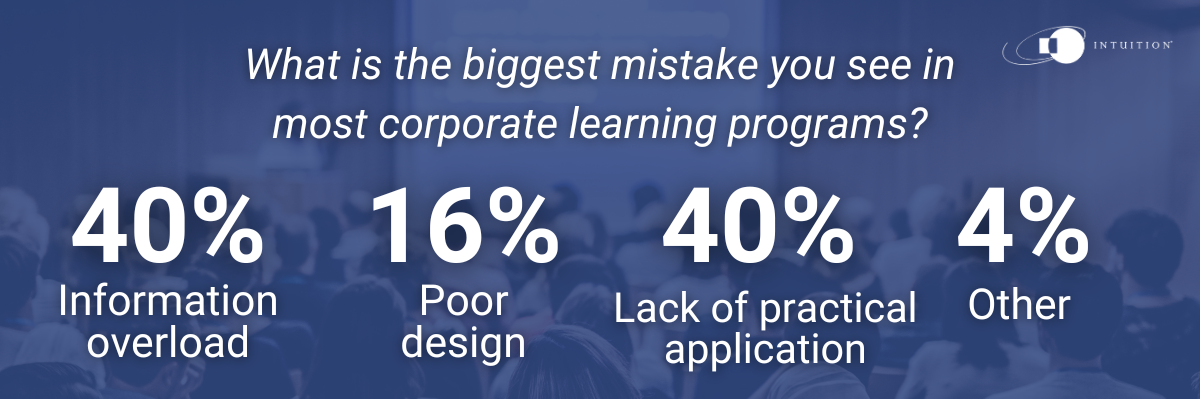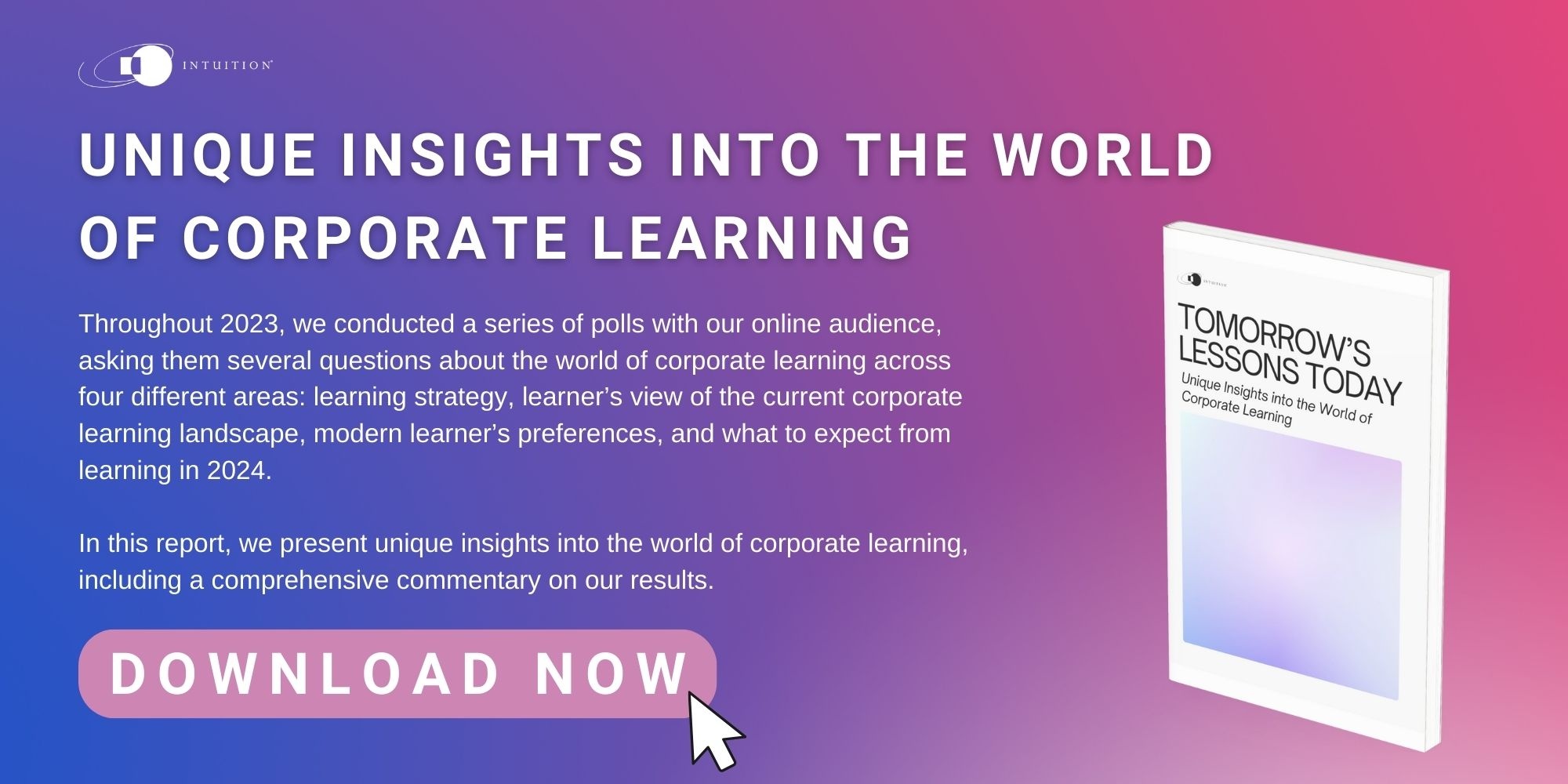The biggest mistakes in corporate learning
This article, ‘The biggest mistakes in corporate learning‘, is taken from our report ‘Tomorrow’s Lessons Today: Unique insights into the World of Corporate Learning’. Throughout 2023, we asked our online audience a series of questions relating to corporate learning with some interesting results.
To access the full report, click here: Unique Insights into the World of Corporate Learning

Corporate learning programs play a crucial role in the development and growth of professionals in various industries. However, not all learning programs are created equal, and there are common mistakes that can hinder their effectiveness.
In this poll, we asked our audience which mistake is the biggest: information overload, lack of practical application, or poor design.
The results were interesting, with an even 40% voting for information overload and lack of practical application, with only 15% citing poor design.
Mistake 1: Information overload
In today’s digital age, where information is abundant, learners can easily become overwhelmed by the sheer volume of content. This overload of information can hinder the learning process and lead to reduced retention and application of knowledge.
To address this challenge, learning programs need to focus on delivering concise and relevant content. Breaking down complex concepts into manageable modules and providing clear learning objectives can help learners navigate through the information effectively. Additionally, incorporating interactive activities and assessments can enhance engagement and reinforce key concepts.
Mistake 2: Poor design
Effective learning experiences require careful consideration of instructional design principles, user experience, and accessibility. When the design is subpar, learners may struggle to engage with the content, resulting in reduced motivation and learning outcomes.
To avoid this mistake, learning programs should prioritize user-centric design principles. This includes designing intuitive navigation, utilizing multimedia elements for enhanced engagement, and ensuring compatibility with different devices and platforms. Incorporating interactive elements, such as quizzes and simulations, can also make the learning experience more engaging and effective.
Mistake 3: Lack of practical application
Many professionals feel that traditional learning approaches often fail to translate theoretical knowledge into practical skills that can be applied in real-world scenarios.
To address this issue, learning programs should incorporate practical exercises, case studies, and simulations that mirror real-life situations. Providing opportunities for learners to apply their knowledge and skills in a safe and supportive environment can significantly enhance their learning experience. Additionally, offering ongoing support and feedback can help learners bridge the gap between theory and practice.
[The Significance of Practical Training in Linking Theoretical Studies with Practice]

Summary
- By addressing these issues and incorporating best practices, corporate learning programs can maximize their impact and empower professionals to thrive in their respective industries.
- It is important to remember that effective corporate learning programs are not one-size-fits-all. They require ongoing evaluation, feedback, and adaptation to meet the evolving needs of learners and organizations.
- By avoiding these common mistakes and embracing innovative approaches, we can create a future where corporate learning programs truly empower professionals to reach their full potential.


